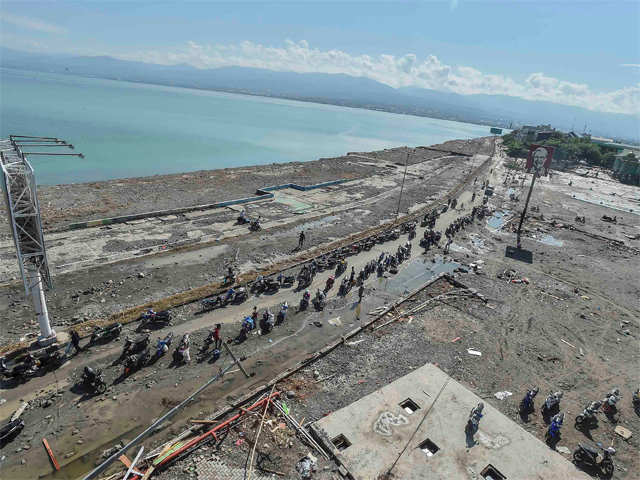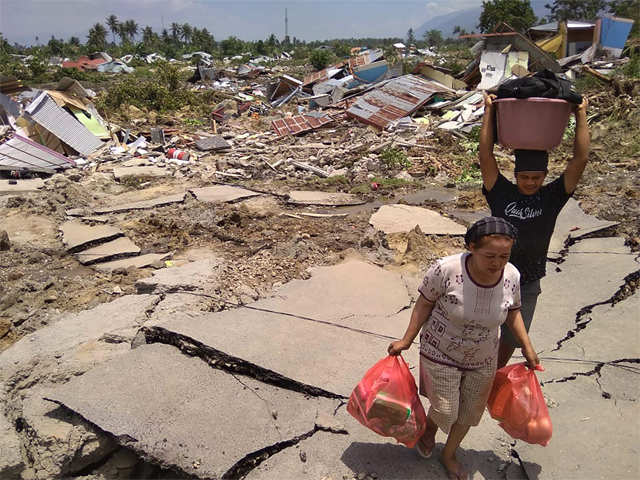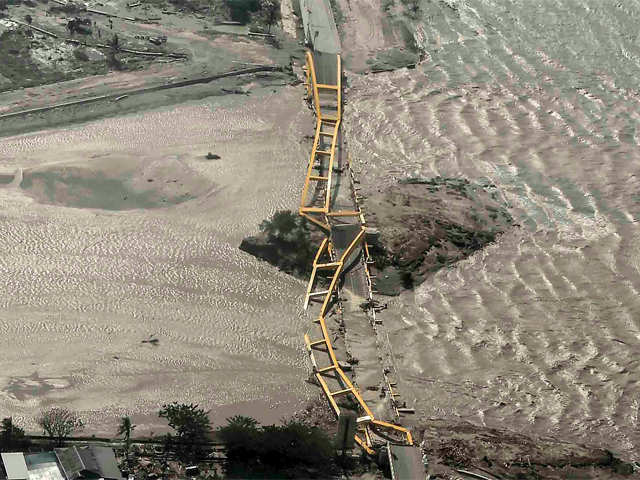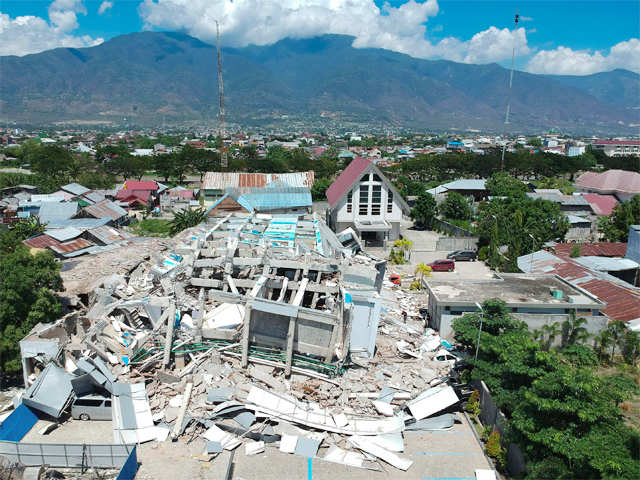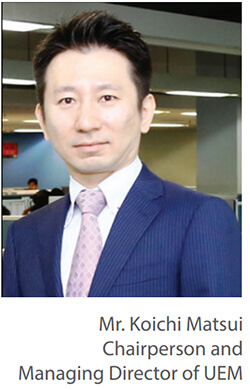
Although this company is showing a good financial revival over the last few Quarters but the question remains here is as to why the share price is not moving up and why it is intentionally being dragged down.?
The share price touched a high of Rs.34 few months back but then got dragged down to below Rs.20 just now.
Gullible retail investors are feeling cheated as they not find any appreciation in their share holders' wealth.Does the dark past of Promoters still haunts like Ghost.?
As per my analysis the main culprit is the issuance of Equity Share Warrants by board to a selected few (Including famous Mr.Shankar sharma) on preferential allotment basis in the month of Oct 2017 at a price of Rs.16/-per warrant with 25% down payment and balance 75% at the time of exercising option for conversion into Equity Shares for which they have been given time period of 18 months as per SEBI guidelines in this regard.
No doubt that Company has followed all the rules and regulations as required by SEBI for such preferential allotment of Share Warrants.
Now when Such warrants got issued at Rs.16/- then it is but natural that interested parties will not allow the price to go higher so that it does not show to prove the bad intentions of the Management at the time of allotment.
Now will the retail investors have to wait for another six months or in case the Warrant holders opt to exercise their option earlier than that
I will not wonder even if HFCL share price gets pulled down even below Rs.16/-by March 2019.Every thing is in the hands of Management and close associates whether they want to create shareholders' wealth or continue to play old dirty games in times to come.
Small write up showing rules for issue of Share Warrants.(for source of this article refer last para)
Share warrants are a
common source of funding used by companies, both public and private. As is
clear from the nomenclature, warrants are issued with an option to convert into
shares of the company. Having said so, share warrants are not similar to CCDs or
ESOPs as has been explained further in this write-up. In the United States,
warrants are also referred to as ‘sweeteners’ since they serve as an enticement
to attract potential investors to invest in the company.
One common confusion
which persists among investors is that share warrants are similar to bearer
shares referred to in sections 114 and 115 of Companies Act, 1956 (‘Act,
1956’). The warrants referred to in erstwhile Act, 1956 were similar in concept
to the warrants referred to in Companies Act, 2006 in United Kingdom. Such
warrants were in the nature of bearer shares. However the concept of bearer
warrants as envisaged therein is also set to become extinct1. The share warrants, which is the subject matter of discussion
in this write-up is similar to the concept of stock warrants used in United
States.
We now attempt to
answer certain basic queries pertaining to the issue of share warrants.
1. What is a share
warrant?
Share warrant is an
option issued by the company that gives the warrant holder a right to subscribe
equity shares at a pre determined price on or after a pre determined time
period.
2. Whether share
warrant is a security?
As per Section 2(h) of
Securities Contract Regulation Act, 1956“securities” include—
(i) shares, scrips,
stocks, bonds, debentures, debenture stock or othermarketable
securities of a like nature in or of any incorporated company or other
body corporate;
(ii) xxx;
(iii) rights or
interest in securities;
Further since the
underlying instrument in warrants is equity shares which in turn are marketable
securities, it is but obvious that warrants will also be marketable in nature.
Further vide RBI vide
Notification 2No. FEMA. 308/2014-RB2 dated June 30, 2014 RBI
clarified that warrants shall be treated as security within the meaning of
Section 2(za) of FEMA3.
3.
Why is it beneficial for the issuer to issue warrants?
If
the issuer issues the shares right away, the issuer will get the current
pricing. The warrant, on the other hand, defers the issuance of the shares to a
future date, while at the same time raising capital immediately. Therefore, the
issuer may take advantage of future appreciation in the price of the stock.
4.
With whom is the option vested?
Looking
at the nature of share warrants it is but obvious that the option to exercise
is with the option holder.
5.
Whether it is mandatory on the part of warrant holder to subscribe to the
equity shares?
The
warrant holder is given a right but not an obligation to subscribe equity
shares. In case he does not exercise his right, the option will lapse. Further,
as per Regulation 4 of ICDR, 2015, if the option holder does not exercise the
option to convert his options into equity shares, then the consideration paid
upfront will stand forfeited.
6.
What does the warrant holder pay?
The
warrant holder partly pays the premium for the option which he purchased and
partly pays the price for the share that ultimately will get allotted to him if
he exercises the option. The percentage of the entire consideration which is to
be paid upfront has not been prescribed in Companies Act, 2013. Hence it is up
to the company to decide the price to be paid upfront. In this regard it is
pertinent to note for the purpose of reference that Regulation 4(3)(c) of ICDR,
2015 requires at least 25% of the consideration amount has to be received
upfront.
7.
How is the element of premium treated in the case of share warrants?
It
is important to understand that there are multiple elements attached to the
issue of share warrants. For example suppose share warrants are issued for a
consideration of Rs. 100/- for equity shares of Rs. 10. Further, the terms of
issue require 25% of the total consideration to be paid upfront. Hence Rs. 25
which is paid upfront by any potential investor is in the nature of an option
premium since it only entitles him to receive the share warrant. Rs. 25 does
not constitute the share premium. This option premium will form a part of the
net worth of the company. Of the remaining Rs. 75, Rs. 65 is the actual premium
on shares considering that the face value is Rs. 10. Hence there is a clear
line of distinction between option premium and share premium.
8.
What happens if the warrant holder does not exercise the option to take equity
shares?
This
is left for the Board to decide since the Act, 2013 does not prescribe anything
specific in this regard. Regulation 4(3) of ICDR, 2015 states that the initial
premium amount paid will stand forfeited.
9.
In case of FDI investor, if the investor later does not exercise the warrant,
what will happen to the premium paid?
In
absence of specific provision under FEMA regulations, it is up to the Board to
decide on the terms of issue of warrants in this regard. As mentioned above,
the Board may resolve that the amount of premium which was paid by FDI investor
at the time of granting of option will get forfeited on similar lines as
Regulation 4(3) of ICDR, 2015.
10.
What does the warrant holder get in lieu of the premium he pays?
In
option theory every option has a value based on the difference between the fair
value of the share at the time of the exercise of the option, and the strike
price, that is, the price at which the option is granted. Therefore, if the
share appreciates in value, the option/warrant holder stands to gain. It is
stated in option theory that more the volatility of the underlying share more
is the chance for making a gain.
11.
How is the amount of option premium determined?
There
are well understood option finding techniques such as Black Scholles Model,
Binomial Options Pricing Model to determine amount of option premium that can
be charged.
12.
What if the option is ultimately not exercised by the warrant holder?
Regulation
4 of ICDR, 2015 states that if the option holder does not exercise the option
to convert his options, then the entire consideration will be forfeited.
However, the provisions of ICDR, 2015 are applicable only to a listed company.
Other companies can decide on their terms under such circumstances. In case the
company has received the balance consideration of 75% in tranches, then the
terms can allow the option premium to be forfeited. Further since the shares
have not been allotted to the potential investor, the element of premium on
shares can be refunded.
13.
Does the right of the warrant holder to get equity shares in future dilute the
current earnings of the Company?
Earnings
of the company are denominated by earning per share (EPS) which is calculated
by dividing Profit after Tax by the number of shares outstanding. Since on
conversion number of outstanding shares will increase, hence to show the
correct performance dilutive EPS needs to be shown which assumes exercise of
all outstanding warrants or options allotted.
14. How
are warrants different from Compulsorily Convertible Debentures (CCDs)?
Under
CCDs there is a certain conversion into equity, and is therefore, in the nature
of a deferred equity whereas warrants are options where the option to exercise
lies with the warrant holder. Therefore, a warrant may expire without
conversion into shares. Hence, if the company does not do well, it may gain by
issuing warrants instead of CCDs. The position of the issuer in case of a
warrant is that of an option, whereas the nature of a CCD is a forward. As in
case of an option, the call option writer stands to gain if the share prices
moves down.
15.
Can interest be paid on warrant until converted?
There
is no question of payment of interest on warrants. However, in case of CCDs
interest may be paid.
16.
Are ESOPs similar in nature to share warrants?
Intuitively
the answer may be a yes since both the instruments offer shares. However having
said so, the cardinal difference between the two is that ESOPs are compensatory
in nature. It is not that every employee of the company is entitled to receive
ESOPs. The privilege is given only to a chosen few. On the
other
hand, share warrants are in the nature of instruments used by genuine investors
to invest in the shares of the company.
17.
Will the amount raised by issue of warrants be counted for calculating net
worth?
As
per Section 2(57) of Act, 2013 “net worth” means the
aggregate value of thepaid-up share capital and all reserves
created out of the profits and securities premium account, after
deducting the aggregate value of the accumulated losses, deferred expenditure
and miscellaneous expenditure not written off, as per the audited balance
sheet, but does not include reserves created out of revaluation of assets,
write-back of depreciation and amalgamation.
In
case of warrants issued at a premium, the holder partly pays the premium for
the option which he purchased and partly pays the price for the share that
ultimately will get allotted to him. The amount of share premium received will
form a part of securities premium account.
Money
received against share warrants are disclosed separately in the balance sheet
under ‘Shareholder funds’ and does not form part of paid-up share capital
unless converted into shares.
18.
Where is the amount received against share warrants shown in the Balance sheet?
For
accounting purposes, the amount received against share warrants shall be shown
under the head Shareholder’s funds on the liability side.
19.
What procedural compliances a company needs to ensure for issue of share
warrants?
Since
share warrants are regarded as security, company needs to ensure compliance of
Section 23 and other applicable provisions of Chapter III Part I in case of
public issue of warrants, Section 42 for issue on private placement basis and
Section 62 (1) in case of a rights issue and Section 62 (1) (c) and Section 42
in case of preferential issue of warrants.
In
case of public issue of warrants, provisions of SEBI (ICDR) Regulations, 2009
as amended from time to time also needs to be complied with. Further, in case
warrants are being issued to person resident outside India – compliance under
FEMA (Transfer or issue of securities to a person resident outside India)
Regulations, 2000 as amended from time to time needs to be ensured.
20.
In case a Company has bought back equity shares recently and a period of 6
months has not elapsed, can the company allot shares for conversion of
warrants?
As
per Section 68 (8) of Act, 2013 the Company can allot shares for discharging
the subsisting obligation of conversion of warrants.
21.
What conditions are prescribed in SEBI (ICDR) Regulations, 2009 for issue of
warrants?
Regulation
4 (3) of SEBI (ICDR) Regulations, 2009 permits issue of warrants along with
public issue or rights issue of specified securities subject to following
conditions:
a.
tenure of such warrants shall not exceed 18 months from the date of allotment
in the public/ rights issue;
b.
not more than one warrant shall be attached to one specified security;
c.
the price or conversion formula of the warrants shall be determined upfront and
at least 25% of the consideration amount shall also be received upfront;
d.
in case the warrant holder does not exercise the option to take equity shares
against any of the warrants held by him, the consideration paid in respect of
such warrant shall be forfeited by the issuer.
Further,
Regulation 72(3) which pertains to ‘conditions for preferential issue’ states
that in case promoter and promoter group has previously subscribed to warrants
of an issuer but failed to exercise the warrants, then the promoter(s) and
promoter group shall be ineligible for issue of specified securities of such
issuer on preferential basis for a period of one year from:
a.
the date of expiry of the tenure of the warrants due to non-exercise of the
option to convert; or
b.
the date of cancellation of the warrants, as the case may be.
22.
At what point of time the amount of consideration shall be paid in terms of
SEBI (ICDR) Regulations, 2009?
Regulation
77 (2) of SEBI(ICDR)Regulations, 2009 mandates that an amount equivalent to 25%
of the consideration determined in terms of regulation 76 is to be paid against
each warrant on the date of allotment of warrants. The balance of the
consideration shall be paid at the time of allotment of equity shares pursuant
to exercise of option against each such warrant by the warrant holder.
23.
At what point of time the amount of consideration shall be paid under the
provisions of FEMA regulations?
Under
FEMA provisions the amount of consideration payable upfront is the same as
stipulated under SEBI (ICDR) Regulations, 2009 i.e. 25% of the consideration.
However,
the balance consideration towards fully paid equity shares needs to be received
within 18 months.4
Price
at the time of conversion shall not be less than fair value at the time of
issuance but can surely be more than the pre-agreed price.
Source:- (Article
is Authored by Aman Nijhawan, CS Nivedita Shankar and CS Vinita Nair
of, who are associated with Vinod Kothari & Co.)



